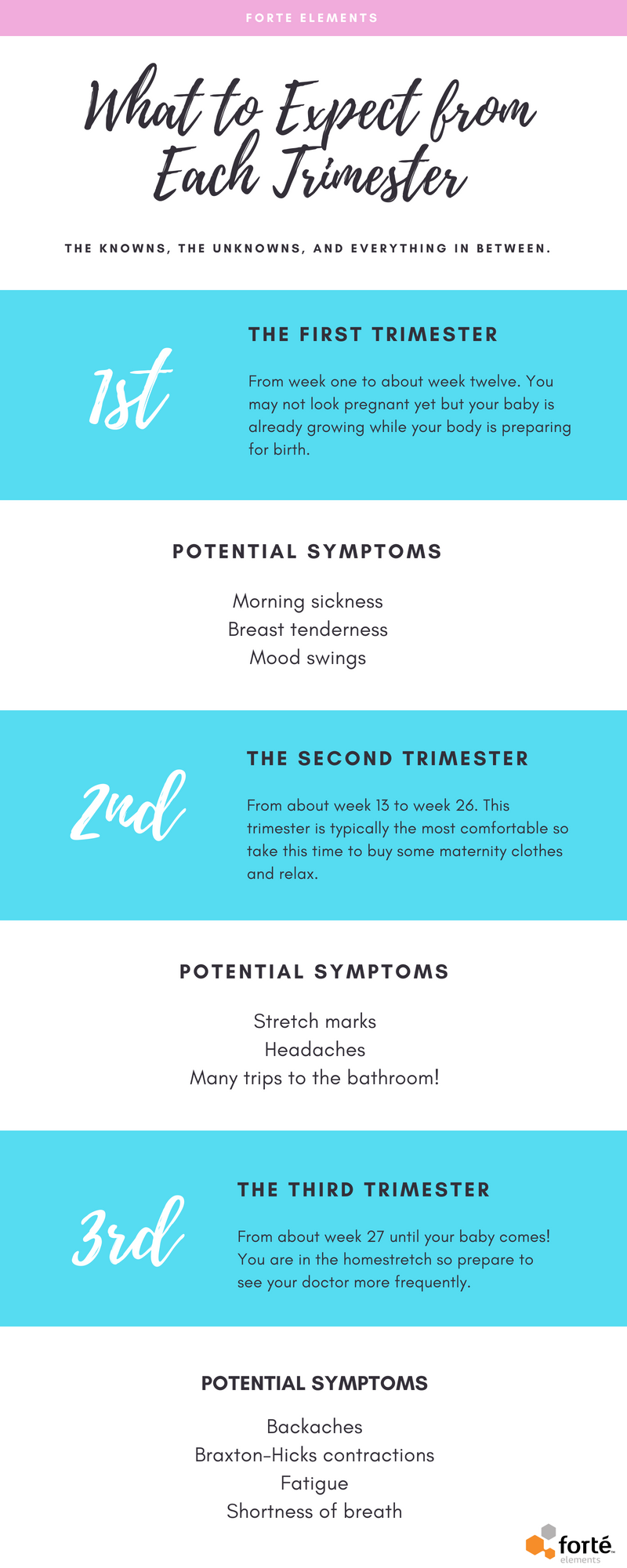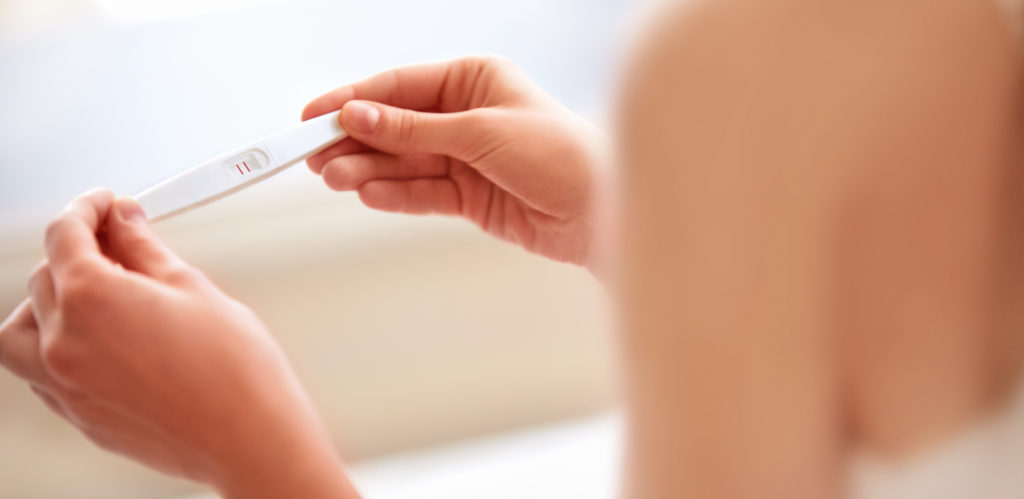Women's Health
What to Expect From Each Trimester
A normal, full-term pregnancy ranges from 37-42 weeks and is divided into three trimesters. Every trimester lasts between 12 and 14 weeks. Each one brings different changes to your body, new challenges, and new excitement as your baby grows.
However, pregnancies do not follow a script, and each one is different for every woman. Some women glow with good health and vitality and are lucky enough to escape the morning sickness, swollen ankles, and stretch marks. Others are not so lucky and their pregnancy is a little rough. There’s simply no way to predict how your body will respond to a pregnancy. The more information you have about what to expect, the easier it will be to deal with as symptoms as they come up.
First trimester
Although you may not look pregnant yet, chances are you’re feeling it. Your body is going through enormous hormonal changes as it accommodates the growing fetus. There’s a flood of pregnancy hormones preparing your body to play hostess for the next few months.
In the first trimester, you’ll start feeling a few aches and pains and experience everything from fatigue to heartburn to constipation1. Remember they are temporary and usually ease as the pregnancy progresses.
Some of the most common early symptoms of pregnancy you may experience are
- morning sickness,
- breast tenderness, and
- mood swings1.
Again, the symptoms are thanks to the hormones that your body is producing.
The first trimester is vital for the development of your baby. The fetus will develop all its organs by the end of the third month, so this is a crucial time. This is when it’s important to
- maintain (or start maintaining) a healthy diet,
- start taking prenatal supplements, and
- cut out any bad habits like smoking and alcohol consumption.
First-trimester to-dos:
- Book your first OBGYN visit, and go prepared with a list of questions to ask.
- Start a prenatal vitamin immediately if you haven’t done so already.
- Eat right. Now’s the time to cut down on caffeine and learn which foods to avoid and which to feature in your pregnancy diet.
Second trimester
This is when your baby bump will start showing as the uterus grows rapidly in size. At the end of the second trimester, your baby will be almost four times as big as it was at the end of the first trimester. It’s probably time for you to start updating your wardrobe to find things that fit! Apart from investing in maternity wear, this is also the time many choose to spread the good news to family members and friends.
The second trimester is often the most comfortable trimester as most of the early pregnancy symptoms gradually disappear. Now is a good time to start planning for your baby’s arrival while you’re feeling better and your energy levels are up.
Between your 18th and 22nd week, you’ll usually have an ultrasound so your doctor can see how your baby is progressing. You can learn the sex of your baby (unless you’d rather be surprised). Screening and diagnostic tests occur in the second trimester.
By the midpoint of your pregnancy, you might also start to feel the first flutters of movement in your tummy. However, if you aren’t feeling your baby move yet, don’t worry. Some women don’t experience movement until further on in their pregnancy.
Changes you may notice in the second trimester2:
- Frequent urination as the uterus starts to press more heavily on the bladder
- Hair growth – pregnancy hormones can boost hair growth- and not always where you want it!
- Headache – headaches are one of the most common pregnancy complaints. Try to get plenty of rest, and practice relaxation techniques such as deep breathing.
- Stretch marks -these emerge as your skin expands to accommodate your growing belly. Although many creams and lotions claim to prevent or eliminate stretch marks, there is little evidence that they actually do. Try using a moisturizer to help soften your skin and reduce itchiness. Most stretch marks should fade on their own after you deliver.
Third trimester
You’re in the homestretch of your pregnancy now, and you’re probably more than ready for the baby to arrive. The third trimester lasts from the 27th week through the birth of your baby. During this time you will start seeing your healthcare provider more frequently.
The third trimester is a good time to educate yourself about labor and delivery. You may want to take some time to enroll in a childbirth class, a parenting class, or even Lamaze classes. These classes are designed to prepare you and your partner for labor and delivery. They can give you a better idea of what to expect. Also, they’re a great way to learn about the different stages of labor and delivery options.
Changes in Your Body3:
- Backache – This isn’t much of a change from the second trimester but you’ll really start to feel the aches and pains now. You might also feel discomfort in your pelvis and hips as your ligaments loosen to prepare for labor. To ease the pressure on your back, try to practice good posture and at night and sleep on your side with a pillow tucked between your legs. This may help with the discomfort.
- Braxton Hicks contractions -These are mild contractions that are like a practice run for the real thing. Braxton Hicks contractions usually aren’t as intense as real labor contractions. They’re also not regular and sometimes disappear when you change positions.
- Discharge -You might see more vaginal discharge during the third trimester. If the flow is heavy enough to soak through your panty liners, call your doctor.
- Tiredness and fatigue -In the third trimester, the tiredness starts creeping in. This is perfectly natural. Make sure you listen to your body by
- resting when you need to,
- sticking to healthy foods, and
- moving around to keep your energy up if you find that helps.
Shop Forte Supplement Products



